Welcome to the second in my series of top ten book lists (see the first one for Year 5 here). This time, I’m looking at my favourite books for Year 3…
Under Your Feet – Dr Jackie Stroud
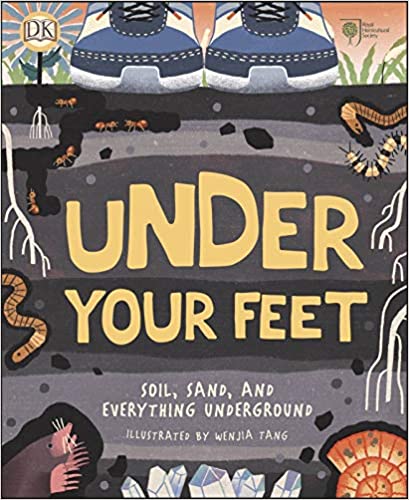
This book does a wonderful job of making soil interesting (which is no mean feat when you’re dealing with 7 year olds!). The book contains information on a huge range of living things that live in different habitats and different types of soil across the globe. Information is all laid out in a very attractive way in bite-sized chunks and the book is beautifully illustrated with a mixture of photos and artwork. And if that isn’t enough to convince you this is an amazing book, there’s also the fact that profits made on the sale of the book are donated to the Royal Horticultural Society (RHS), an amazing organisation who, among other things, have a wonderful range of free educational resources – check them out here.
Stone Girl, Bone Girl – Laurence Anholt

This is a lovely book all about Mary Anning, a scientist you absolutely must learn about when doing rocks and fossils. In my class, this one led to a really interesting discussion about why she wasn’t taken seriously as a female scientist. If you’re near the coast, or even have children who visit the beach often, you may even inspire some fossil hunting!
The Pebble in my Pocket – Meredith Hooper

I pondered for a while over whether this one belonged better in Year 3 (rocks & fossils) or Year 6 (evolution) and, while it’s ultimately ended up here in the Year 3 blog rather than the Year 6 one, it definitely has relevance to both, meaning you’ll get great value for money out of having a copy in the school library! The book looks at the ‘story’ of a pebble picked up by a little girl from 480 million years ago to present day. It would be great for helping children to understand the massive timescales we’re juggling with when we look at fossils and contemplate how long ago dinosaurs roamed the Earth (did you know that there was less time between the stegosaurus living on our planet and T-Rexes than there has been between us and T-Rexes? LOVE that fact!) and would really lend itself to creating a classroom timeline. It might also help root out that common misconception that dinosaurs and people were around at the same time. There’s also a wonderful creative writing opportunity on asking children to find a pebble of their own and tell its story, all while helping them realise the amazingness of that tiny pebble and the almost incomprehensible age of it!
Mad About Dinosaurs – Giles Andreae

I just love anything by Giles Andreae (mostly known for the marvellous ‘Giraffes Can’t Dance’) so this one was bound to work its way in to the year group where we learn about fossils! There are loads of funny rhymes about different kinds of dinosaurs that would be great for learning and reciting aloud, and would fit in well when learning about different styles of poetry.
A Seed is Sleepy – Dianna Hutts Aston
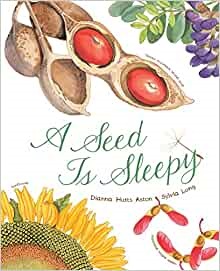
This book is a really nice introduction to learning about seeds and plants, and would work really well as part of a lesson where children get to cut up and examine a range of different types of seeds first hand. It’s a great way to get children thinking about the really wonderful potential that lies in each tiny seed and the journeys they make to become plants.
The Gruffalo’s Child – Julia Donaldson

It’s likely you’re familiar with this story already, but just in case, it follows the Gruffalo’s child as she heads out into the woods at night, afraid of encountering the ‘Big Bad Mouse’. As readers of the first Gruffalo story will know though, the mouse is a clever little rodent and this time tricks the Gruffalo’s Child into thinking he is Big and Bad by casting a large shadow. Although the book itself is aimed at a slightly younger audience than Year 3, there are fantastic links here to the patterns in the ways shadows change, and I used it in my Year 3 class as a stimulus for writing letters to the Gruffalo’s Child telling her she shouldn’t be afraid and explaining how shadows can be made bigger.
The Game of Shadows & The Game in the Dark – Hervé Tullet
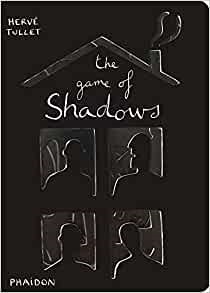
These ones are difficult to get hold of, but worth keeping an eye out for. They each have lovely die-cut pages that cast interesting shadows when a torch is shone on them. Great for exploring shadows and there’s potential for a D&T project in children creating their own books in the same vein.
Orion and the Dark – Emma Yarlett
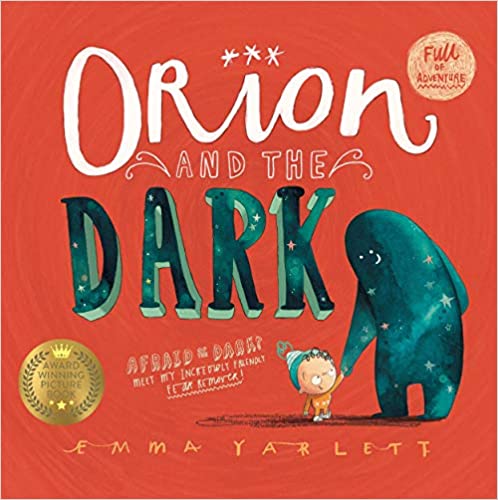
Okay, so this one doesn’t have particularly strong links with scientific concepts or enquiry skills, but it’s just lovely, and would sit nicely alongside learning about light! If you were going to read this to the class, it would be an absolute must to scan the pages and display it on a larger screen; there are just so many little details in the pictures to explore. Easily enough in there got get a solid few weeks of guided reading sessions out of it (and we did just that when I was in Year 3 a few years back!).
Rosie Revere, Engineer – Andrea Beaty
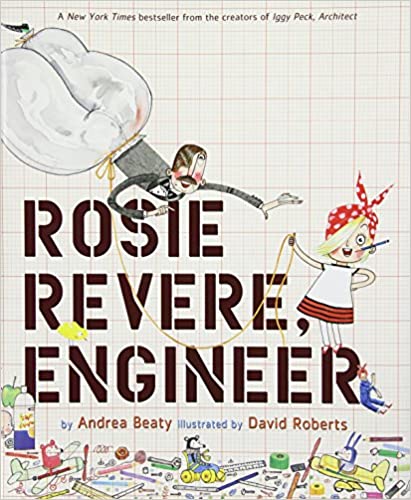
This one doesn’t tie into Year 3 science topics specifically, but it’s a wonderful book and I personally think the best time to share it is in Year 3 (although, that being said, I’ve also read it to Year 2s, 5s and 6s, so don’t think it must stay in Year 3!). It tells a lovely tale about budding engineer Rosie who initially has her confidence knocked when she is laughed at for one of her less ‘serious’ inventions but later learns why failure is important and ‘flops’ should be embraced. You can also get Iggy Peck, Architect and Ada Twist, Scientist by the same author which are similarly wonderful, but Rosie is my absolute favourite! (There’s also a newer one, Sofia Valdez Future Prez, which I’m sure is just as amazing as the others, but I haven’t had a chance to read that one myself yet.)
Spectacular Skeletons – Whizz Pop Bang

If you read my blog on books for Year 5 (or, let’s be honest, if you’ve ever met me) you’ll have heard how much I like this magazine! The whole lot of them are absolutely wonderful and they make great additions to any school libraries or book corners in general, but there are also lots of specific issues that relate really well to primary science topics. This one, for example, links beautifully to the Animals Including Humans topic in Year 3, and was one of the ones that we sent out each week as an informal ‘homework’ along with a scrapbook for children to record what they’d done after reading the magazine. Also linked to Year 3 topics, there are issues on fossils, rocks, dinosaurs, light, and seeds.
What are your favourite science-linked texts to use with Year 3? Let me know via the comments; I’m always looking to expand my library!
If you’re interested in other book links to science, check out this blog post exploring a science/maths link and my Science Story List with Enquiry Questions.
Please note, as an Amazon Associate I earn from qualifying purchases directly made from this page.

Great post! Thanks, I’ll use these ideas in my planning 🙂